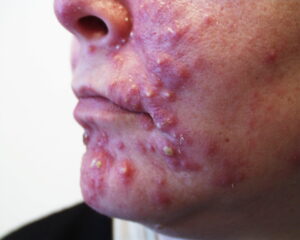This year, Fathers’ Day falls right at the tail end of Men’s Health Week.
Take a moment to think through the variety of concerns of our fathers.
- Many of our fathers are of advancing ages and have to address all the ramifications of that, including arthritis, coronary artery disease, peripheral vascular disease and cancer. With the likelihood of suffering from multiple diseases, it is probable that they are taking multiple medications, leaving them susceptible to medication side effects and drug interactions. Either of these concerns can result in falls, leading to trauma, fractures and head injuries. Additionally, many fathers have to deal with Alzheimer’s and/or dementia type issues.
- Some of our fathers have been taken from us by gunshots or other forms of violence. Remember, public health concerns have caused more deaths than medical illness.
- On a lighter note, a lot of fathers will only have to suffer the embarrassment of a minor burn over the grill this weekend.
All of this is meant to point out the need for health prevention in a group that utilizes health care much less than women and children. If you’re in the gift giving mood this Sunday, do better than that not-so-attractive tie. Think health. Get one of those health monitors that track steps, eating and sleeping habits. How about a treadmill? Try a safety helmet if he’s a motorcycle rider. Grab some manly mittens for the grill. Get him a back brace or a dolly to help with the duties he performs around the house. Make him an appointment to see his physician.
As a father, when I think of my health and what my loved ones can best do to contribute to it year-round, I think of happiness. Fathers are providers and protectors. If you’re lucky enough to still have your father around, take a moment, and let him know the ways he’s contributed to your happiness. That’s pretty simple and shouldn’t be that much to ask. Don’t discount the impact of happiness on health.
On Straight, No Chaser, we often discuss the intersection of health and happiness, and during Men’s Health Week and on a day like Father’s Day, that discussion becomes both important and meaningful. It is quite likely that on this day, fathers everywhere are reflecting on the meaning of life and realizing that fatherhood is our ultimate legacy. So while you’re rewarding your favorite guy (with healthy food, no doubt), lay the love sauce on a little thick. It’s needed and will be appreciated. Here’s an early Happy Fathers’ Day to all those deserving men out there.
Thanks for liking and following Straight, No Chaser! This public service provides a sample of what http://www.SterlingMedicalAdvice.com (SMA) and 844-SMA-TALK offers. Please share our page with your friends on WordPress, like us on Facebook @ SterlingMedicalAdvice.com and follow us on Twitter at @asksterlingmd. Preorder your copy of Dr. Sterling’s new book Behind The Curtain: A Peek at Life from within the ER at jeffreysterlingbooks.com.












































